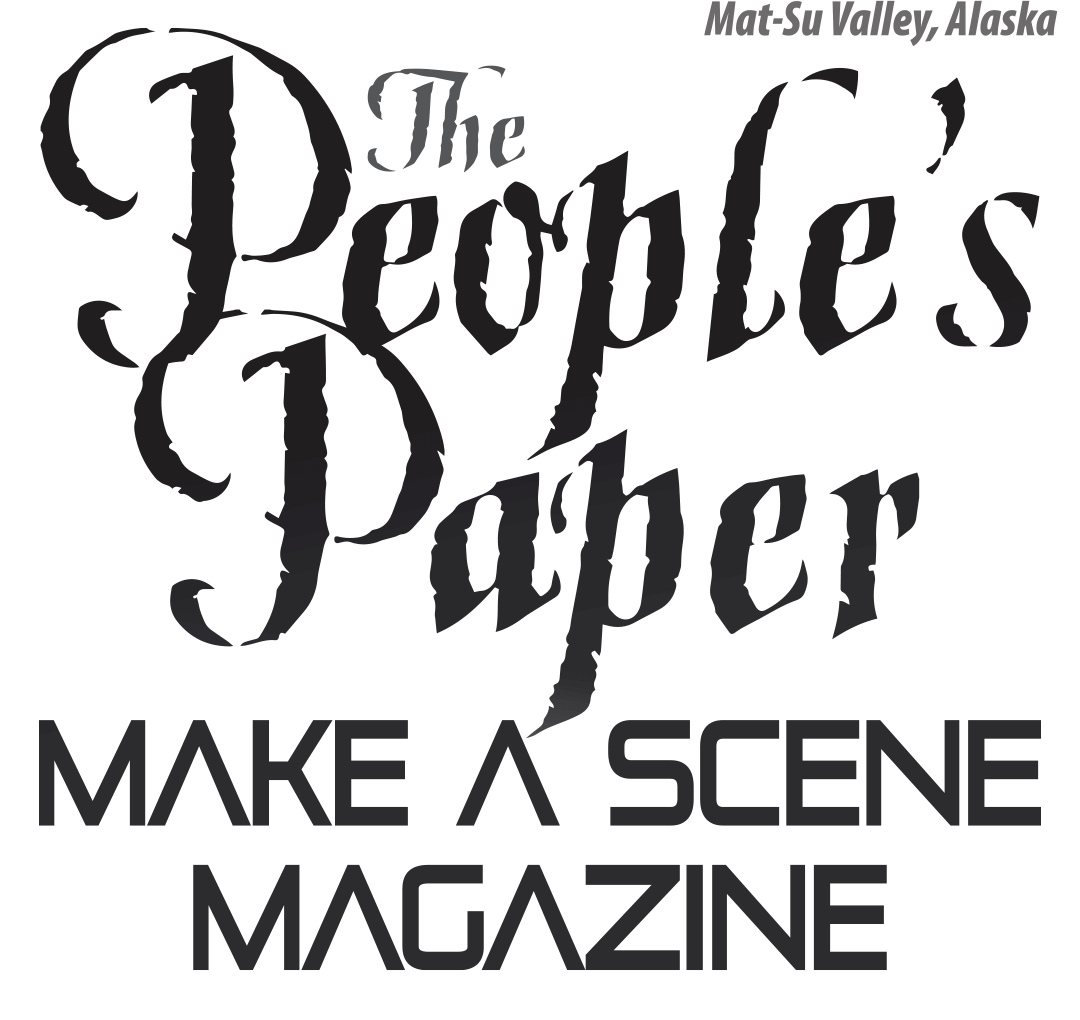Contributed by Quinn Townsend
Introduction
Across the country, states’ economies and budgets have been hit heavily due to the COVID-19 pandemic, and unfortunately, Alaska is no exception. With high unemployment and much less revenue coming into the state because oil prices hit historic lows, the state’s ongoing budget deficit, as well as the needs of our local communities and businesses, are only growing larger. Other states with deficits far less severe than the one facing Alaska are stepping up to the plate to address COVID-19-related deficits by slashing state expenditures. In Georgia, state agencies were told to cut their budgets for the upcoming year by 14 percent, a total $3.5 billion. The governor ordered state spending to decrease by almost $2 billion in Oregon, an 8.5 percent cut for its two-year budget cycle. In March, the Ohio governor implemented a state government hiring freeze and ordered budget cuts up to 20 percent. Colorado’s governor cut immediate government spending by $228.7 million, although he did not address future spending.
According to a recent report from Moody’s Analytics, Alaska may experience up to an 80 percent reduction in general fund revenues, almost twice as much as any other state in the country. While Alaska could continue to kick the can down the road and keep draining our bank accounts (primarily the Permanent Fund’s Earnings Reserve), the state really has two main choices to respond to this current crisis: cinch our budget belt even tighter like other states are doing, or tax Alaskans in the misguided hope that increasing revenue will save us.
Alaska’s Revenue Situation
The largest funding source for the state budget is the Unrestricted General Fund (UGF). The bulk of revenue in the UGF is from petroleum-based sources. The state’s Spring 2020 Revenue Forecast estimates that for fiscal year 2020, $1.1 billion in revenue will come from petroleum-based sources, while only $0.5 billion will be from non-petroleum-based sources, a total of $1.6 billion. This total is $527 million less than the estimates from fall 2019 and is largely due to lower oil prices. Unfortunately, these estimates from early April are probably quite optimistic, as no one could have predicted that oil prices would plummet so drastically as they did later that same month.
According to the Tax Foundation, taxes levied on the oil industry make up about 81 percent of Alaska’s total revenues. In fact, during the most recent peak in 2012, petroleum-based sources made up $8.86 billion of the then $9.9 billion UGF – a total of 93 percent. This is in stark contrast to the fiscal year 2020 projections, which estimate only $1.1 billion in UGF revenue from petroleum-based sources. Needless to say, Alaska is expecting much less revenue than originally estimated.
Less government revenue is also expected at the local community level. The COVID-19 effects on commercial fishing will likely result in fewer tax receipts for municipalities, and an expected plunge in tourism this summer will mean less revenue collected by way of local sales taxes on tourism-related spending. This has led to an increase in calls for state and federal spending to subsidize communities.
Possible Responses
A knee-jerk reaction to all of this would be to demand that state government spend more to help communities, families, and businesses. With a budget already in deficit, some policymakers will look to implement a statewide personal income tax on Alaskans to allow for that extra spending. Others might suggest drawing more from Alaska’s “savings accounts.” Since the Constitutional Budget Reserve (CBR) is nearly empty, they’ll look to the Earnings Reserve Account (ERA). However, diverting more money from the ERA for government spending is a hot political discussion. Alaska’s state spending is considerably more than its current revenue projections. Continuing, year after year, to expect the state budget to be propped up by our savings accounts may not be the most responsible choice.
The alternative of new taxes is also problematic. Previous studies have shown that specific taxes would harm Alaska’s economy when they were initially proposed, and that has not changed. For example, economists at The Buckeye Institute’s Economic Research Center (ERC) analyzed four different tax proposals the Alaska Legislature discussed in 2019 – all would harm economic growth, meaning people would spend less money in their communities due to the taxes. In addition, they would have led to a decrease in jobs and would not have recovered the revenue necessary to address the budget deficit.
Figure 1 demonstrates how little these four tax proposals (as calculated in 2019) would impact the current budget deficit, based on the ERC’s findings. Even if the state implemented both a three percent sales tax and a progressive income tax (the income tax that would bring in the most revenue, but also cause the most economic harm to individuals and businesses in the state), the revenue obtained would only address less than half of the approximately $1.6 billion budget deficit. These estimates do not reflect revenue that may be transferred from the ERA. That revenue figure will assuredly be intensely debated in the coming legislative session.
Figure 1
New taxes come with new burdens, for both Alaskans and the state, including significant administrative costs associated with setting up new bureaucracies. Additionally, Alaska currently lacks the proper tax base of businesses and wage earners to sustain higher taxes. In its present state, Alaska’s economy is too unstable, its budget too erratic, and its business environment too unpredictable for job creators to seriously consider Alaska and provide the tax base needed for responsible tax increases. With Alaska’s recently slowed economy and higher unemployment, now is not the time to make decisions that fly in the face of facts. Alaska policymakers cannot assume that somehow our state could defy basic economic principles, no matter how independent and unique our state is.
Other policymakers have suggested that federal funding from the Congressional CARES Act could offset some budget cuts that may be necessary due to the pandemic. But federal funding comes with strings attached that often end up being more costly to the state long term. As an example, one hidden provision in the CARES Act could lead to many new Medicaid enrollees and prevents states from removing these enrollees once they go back to work. That would naturally drive up Alaska’s state budget. Funding from the CARES Act can only be spent on pandemic-related costs and does not allow states flexible use of the funding. Expecting federal funding to fill budget gaps simply reduces the incentives to spend state money prudently and incentivizes new areas of spending. Now more than ever, Alaska needs to take drastic steps to decrease its budget and not overspend on the hopes that there will be additional federal funding available in the future.
As difficult as it may be, instead of relying on federal funds or the state’s savings accounts, Alaska should tighten its state budget belt. Alaskans must continue to resist the temptation to introduce or raise taxes that hurt the economy and hinder job creation. The state instead needs to spend prudently, cut spending, and not rely on federal funds for long-term help. But Alaskans are accustomed to making sacrifices and working hard to beat the odds.
As noted earlier, other states have begun the difficult process of cutting state expenditures in response to the economic effects of COVID-19. As the pandemic unfolded, Alaska’s executive administration addressed the need to control spending by temporarily banning out-of-state travel and establishing a hiring freeze for all state employees. While something is better than nothing, the state of Alaska will need to do much more than simply cut back on state employee travel to address the growing budget deficit. For example, while many private sector workers in Alaska have been furloughed during this pandemic, thus seeing a major cut in income, the vast majority of state employees have not been furloughed and will even be receiving their cost-of-living wage increases for the next fiscal year. This is just one example of state government not making sacrifices while many of those working in the private sector are without jobs or working highly reduced hours.
State policymakers should follow the lead of localities such as Juneau, which recently proposed several cuts to their budget, including eliminating some government positions, in response to the economic downturn resulting from the pandemic.
Conclusion
While no one could have predicted the devastating effects of the pandemic this spring, Alaska’s budget deficit is something the state has been dealing with for several years. It is an on-going problem that has been made worse by present circumstances. The question now is, does Alaska implement a harmful personal tax, further burdening hard-hit Alaskans, or does the state tighten its belt and reduce the budget to be reasonable and sustainable.
“COVID-19 disruptions cause 13.1 percent job loss in April,” Newsroom, Alaska Department of Labor and Workforce Development Office of the Commissioner, published May 22, 2020, https://labor.alaska.gov/news/2020/news20-17.htm.
Tegan Hanlon, “Oil prices fell to a historic low Monday. Here’s what that means for Alaska,” Alaska Public Media, April 20, 2020, https://www.alaskapublic.org/2020/04/20/oil-prices-fell-to-a-historic-low-monday-heres-what-that-means-for-alaska/.
James Salzer, “Georgia agencies told to plan billions in spending cuts due to pandemic,” Atlanta Journal-Constitution, May 1, 2020, https://www.ajc.com/news/state--regional-govt--politics/georgia-agencies-told-plan-billions-spending-cuts-due-pandemic/tLrAiX29jBWzIizTLzX8wN/.
Dirk VanderHart, “Gov. Kate Brown Orders Oregon Agencies To Plan Nearly $2 Billion In Spending Cuts,” Oregon Public Broadcasting, April 29, 2020, https://www.opb.org/news/article/kate-brown-oregon-agencies-2-billion-spending-cuts-budget/.
Jeremy Pelzer, “Ohio Gov. Mike DeWine will freeze state government hiring, seek big spending cuts amid coronavirus crisis,” Cleveland.com, March 23, 2020, https://www.cleveland.com/coronavirus/2020/03/ohio-gov-mike-dewine-will-freeze-state-government-hiring-seek-big-spending-cuts.html.
Elise Schmelzer and Sam Tabachnik, “Gov. Jared Polis limits evictions, cuts immediate state spending by $228.7 million,” The Denver Post, May 7, 2020, https://www.denverpost.com/2020/05/01/polis-coronavirus-covid-state-spending/.
Dan White, Sarah Crane, and Colin Seitz, “Stress-Testing States: COVID-19,” Moody Analytics, April 14, 2020, https://www.economy.com/getlocal?q=37F6F320-EF2A-4806-9AAB-EADE66FA0317&app=download.
“Spring 2020 Revenue Forecast,” Alaska Department of Revenue-Tax Division, April 6, 2020, http://www.tax.alaska.gov/programs/documentviewer/viewer.aspx?1583r.
“Crude Oil and Natural Gas Prices,” Alaska Department of Revenue-Tax Division, last modified June 8, 2020, http://www.tax.alaska.gov/programs/oil/dailyoil/dailyoil.aspx.
Ulrik Boesen, “Historic Oil Price Burns Hole in State Budgets,” Tax Foundation, April 24, 2020, https://taxfoundation.org/historic-oil-price-burns-hole-in-state-budgets/.
Jill Burke, “Are You Prepared: Coronavirus and the Alaska Economy,” KTUU, March 7, 2020, https://www.ktuu.com/content/news/Are-You-Prepared-Coronavirus-and-the-Alaska-Economy---568577991.html.
Associated Press, “Alaska Looking for Silver Lining in Expected Tourism Decline,” U.S. News, May 14, 2020, https://www.usnews.com/news/best-states/alaska/articles/2020-05-14/alaska-looking-for-silver-lining-in-expected-tourism-decline.
“Constitutional Budget Reserve Fund (CBRF) & Statutory Budget Reserve Fund (SBRF),” Alaska Treasury Division-Accounting Section, last modified July 8, 2019, https://treasury.dor.alaska.gov/Portals/0/docs/gefonsi_cbr_charts/fy2020/01%20Jul%202019.pdf?ver=2019-08-08-125332-043×tamp=1590606531751.
Rea Hederman, Andrew Kidd, Tyler Shankel, and James Woodward, “Unsustainable Spending: The State of Alaska’s Budget and Economy,” The Buckeye Institute, April 17, 2019, http://alaskapolicyforum.org/2019/04/unsustainable-spending-the-state-of-alaskas-budget-and-economy/.
Becky Bohrer, “Dunleavy Cuts Budget, Says Federal Aid Can Help Offset Brunt,” Associated Press, U.S. News, April 7, 2020, https://www.usnews.com/news/best-states/alaska/articles/2020-04-07/dunleavy-cuts-budget-says-federal-aid-can-help-offset-brunt.
Sam Adolphsen, Scott Centorino, and Jonathon Ingram, “How the CARES Act moves America toward Medicaid for All,” Foundation for Government Accountability, April 8, 2020, https://thefga.org/wp-content/uploads/2020/04/CARES-Act-uses-UI-Medicaid-for-all.pdf.
“Unintended Consequences of the CARES Act,” Alaska Policy Forum, April 27, 2020, https://alaskapolicyforum.org/2020/04/consequences-cares-act/.
Mike Ross, “Governor announces hiring freeze and travel ban for state employees,” KTUU, March 10, 2020, https://www.ktuu.com/content/news/Hiring-freeze--travel-ban-for-state-employees-568657191.html.
“Biennial Budget: Proposed Fiscal Year 2021 & 2022-Year 1 of the FY21/22 Biennial Budget,” p. 5, City and Borough of Juneau Assembly, Submitted April 1, 2020, https://3tb2gc2mxpvu3uwt0l20tbhq-wpengine.netdna-ssl.com/wp-content/uploads/2020/03/FY21-22-Proposed-Budget-3.27.2020.pdf.















































